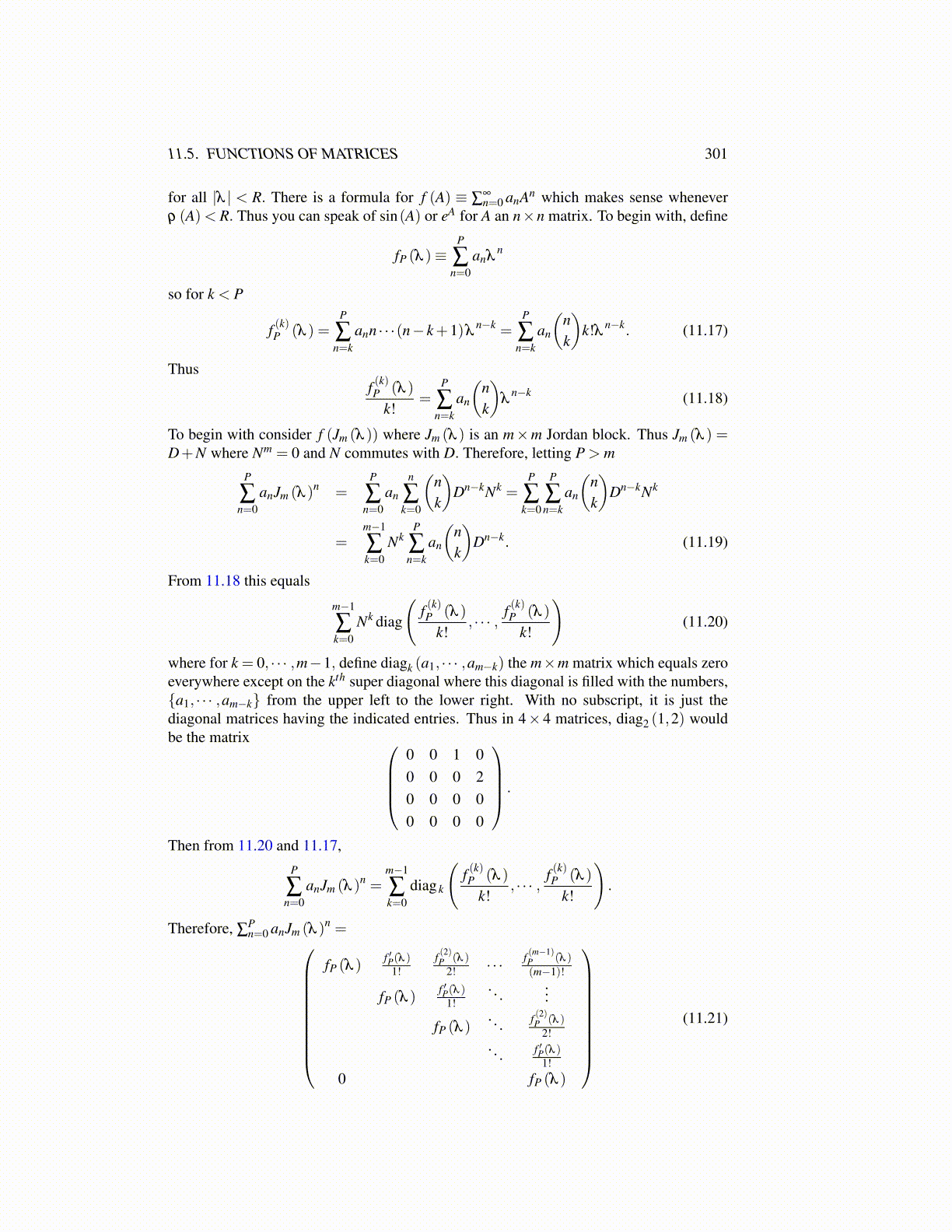
11.5. FUNCTIONS OF MATRICES 301
for all |λ | < R. There is a formula for f (A) ≡ ∑∞n=0 anAn which makes sense whenever
ρ (A)< R. Thus you can speak of sin(A) or eA for A an n×n matrix. To begin with, define
fP (λ )≡P
∑n=0
anλn
so for k < P
f (k)P (λ ) =P
∑n=k
ann · · ·(n− k+1)λn−k =
P
∑n=k
an
(nk
)k!λ n−k. (11.17)
Thusf (k)P (λ )
k!=
P
∑n=k
an
(nk
)λ
n−k (11.18)
To begin with consider f (Jm (λ )) where Jm (λ ) is an m×m Jordan block. Thus Jm (λ ) =D+N where Nm = 0 and N commutes with D. Therefore, letting P > m
P
∑n=0
anJm (λ )n =P
∑n=0
an
n
∑k=0
(nk
)Dn−kNk =
P
∑k=0
P
∑n=k
an
(nk
)Dn−kNk
=m−1
∑k=0
NkP
∑n=k
an
(nk
)Dn−k. (11.19)
From 11.18 this equals
m−1
∑k=0
Nk diag
(f (k)P (λ )
k!, · · · ,
f (k)P (λ )
k!
)(11.20)
where for k = 0, · · · ,m−1, define diagk (a1, · · · ,am−k) the m×m matrix which equals zeroeverywhere except on the kth super diagonal where this diagonal is filled with the numbers,{a1, · · · ,am−k} from the upper left to the lower right. With no subscript, it is just thediagonal matrices having the indicated entries. Thus in 4× 4 matrices, diag2 (1,2) wouldbe the matrix
0 0 1 00 0 0 20 0 0 00 0 0 0
.
Then from 11.20 and 11.17,P
∑n=0
anJm (λ )n =m−1
∑k=0
diag k
(f (k)P (λ )
k!, · · · ,
f (k)P (λ )
k!
).
Therefore, ∑Pn=0 anJm (λ )n =
fP (λ )f ′P(λ )
1!f (2)P (λ )
2! · · · f (m−1)P (λ )
(m−1)!
fP (λ )f ′P(λ )
1!. . .
...
fP (λ ). . . f (2)P (λ )
2!. . . f ′P(λ )
1!0 fP (λ )
(11.21)